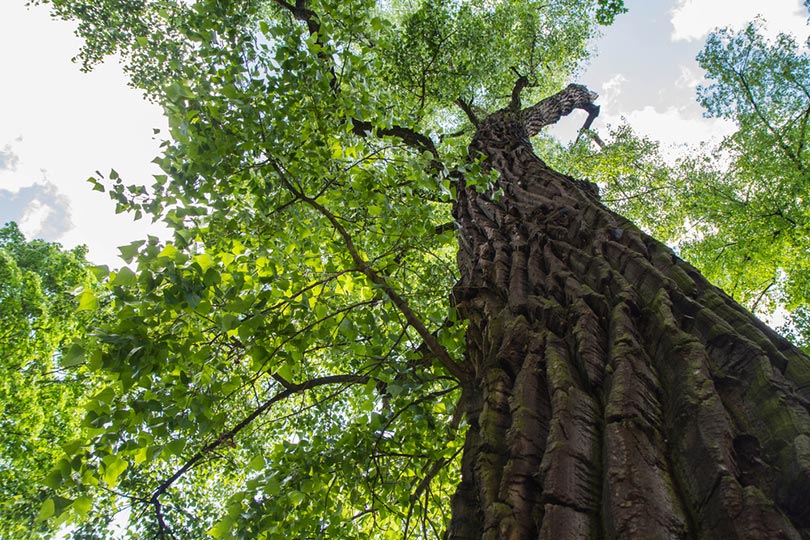What Is the State Tree of New Mexico? Uses, Facts, & FAQ
-
Pete Ortiz
- Last updated:

New Mexico is famous for its delicacies, rich history, and stunning desert landscape. As you approach this southwestern region of the USA, you’ll smell its crisp air carrying the smell of the pinyon pine, its state tree. But how well do you know its official state tree?
New Mexico’s state tree is the pinyon pine, which the Federation of Women’s Clubs selected. These women were given the mandate to choose the state’s tree to serve as its emblem, so they suggested the pinyon pine to the lawmakers who approved the choice and officially legislated it in March 1949.
In this guide, you’ll learn what makes a state tree and more about the New Mexico state tree. You’ll also know the trees that naturally thrive in New Mexico and the interesting facts about New Mexico. Let’s get started.
What Is a State Tree?
There is a specific official tree¹ for every US state. These trees are native to the state and naturally thrive there. They are usually chosen for their history and the region’s timber economy. You can find USA’s 50 state trees in the National Arboretum in Washington, DC.
What Is the New Mexico State Tree?
The pinyon pine¹, scientifically named Pinus edulis, is New Mexico’s state tree. Also known as the two-leaf pinyon or colorado pinyon, this state tree is commercially sold for decorative purposes over Christmas.
Its well-rounded, slow-growing nature makes it the perfect tree for the holidays. It can grow up to approximately 15 and 35 feet tall. This tree flourishes in the dry alpine climate and can grow as old as 400 to 1,000 years. It also grows in open woodlands and also on the ledges and crevices of canyons. You can find it widely in the southwestern desert regions of Colorado, central Utah, southern Wyoming, and northern Arizona.
Pinyon pine attracts many creatures like bears and birds to its branches who enjoy eating its pine nuts. You can also consume their nuts as snacks as the region’s natives did as a source of their proteins.
Large-scale seed production of these state trees takes place every 4–7 years. Often, older, more mature trees of at least 75 years produce these huge seed yields.
Unlike other state trees, pinyon pine’s small nature does not allow its use for timber. You can also use it for making charcoal, mine shoring, and railroad ties.
Uses of the Pinyon Pine
- Waterproofing baskets
- Acting as an adhesive
- It can be used as an antiseptic¹
- Its inner bark treats skin disorders
- Air freshener and bathroom cleanser
- Treating scurvy from tea made from its needles
- Its antibacterial property is used to create a salve¹.
- Their nuts are excellent sources of healthy fats.
Interesting Facts About the Pinyon Pine Seeds
Pinyon pine seeds (pine nuts) are rich in nutrients. These energy-dense seeds contain 3,000 calories per pound and are a source of oleic acid (a monounsaturated fatty acid), iron, calcium, zinc, magnesium, and vitamin E.
These pine nuts come in numerous dishes¹ like chocolate tart, pork with pine crust, and pine nut soup. You can also use them for making cookies and sweets.
Trees That Naturally Thrive in New Mexico
Here are some New Mexico-friendly trees.
1. Sycamores

Sycamores are large plane trees that provide cool, pleasant shade throughout the summer. They have distinctive barks and sturdy branches. Sycamore leaves resemble maple leaves but are much larger with a rougher surface. In winter, the seed clusters (which are ball-like) hang from the barren branches.
2. Populus

From the Populus family are the aspen, poplars, and cottonwoods shade trees which grow very fast. Cottonwoods naturally grow across the Rio Grande Valley’s riverbanks throughout New Mexico.
3. Oak

Oaks thrive in New Mexico and are lovely shade trees with stunning fall foliage. These gigantic trees grow slowly yet live a long time. They are all cold-tolerant and produce acorns, a valuable food for wildlife in New Mexico.
4. Honey Locust

Honey locusts thrive in New Mexico, including Central and Eastern North America. These shade trees grow with yellow leaves that turn a rich green in the summer. They don’t have invasive roots and will provide filtered shade allowing grass or other plants to flourish underneath the canopy.
In New Mexico’s landscape, fruit trees are a rewarding venture. Some of these trees are self-fruitful (can survive without a nearby pollinator tree), while others aren’t. The fruit trees include apples, peaches, plums, cherries, and apricots.
Conclusion
There you have it! The state tree of New Mexico is the pinyon pine, which the Federation of Women’s Clubs selected. The choice was officially legislated in March 1949, due to its history in the state and wide range of uses.
- https://www.unitedstatesnow.org/what-is-the-state-tree-of-new-mexico.htm
- https://thefactfile.org/state-tree-list/
- https://www.treelawncareservices.us/what-is-new-mexico-state-tree/
- https://www.sos.state.nm.us/about-new-mexico/state-tree/
- https://factcity.com/facts-about-new-mexico/#:~:text=1%20The%20leaves%20of%20the%20Yucca%2C%20New%20Mexico%E2%80%99s,Peak%20soaring%20above%20the%20clouds%20at%2013%2C000%20feet.
- https://osunanursery.com/new-mexico-friendly-trees/#
Featured Image Credit: Pinus edulis, Famartin, Wikimedia Commons CC SA 3.0 Unported
Contents



